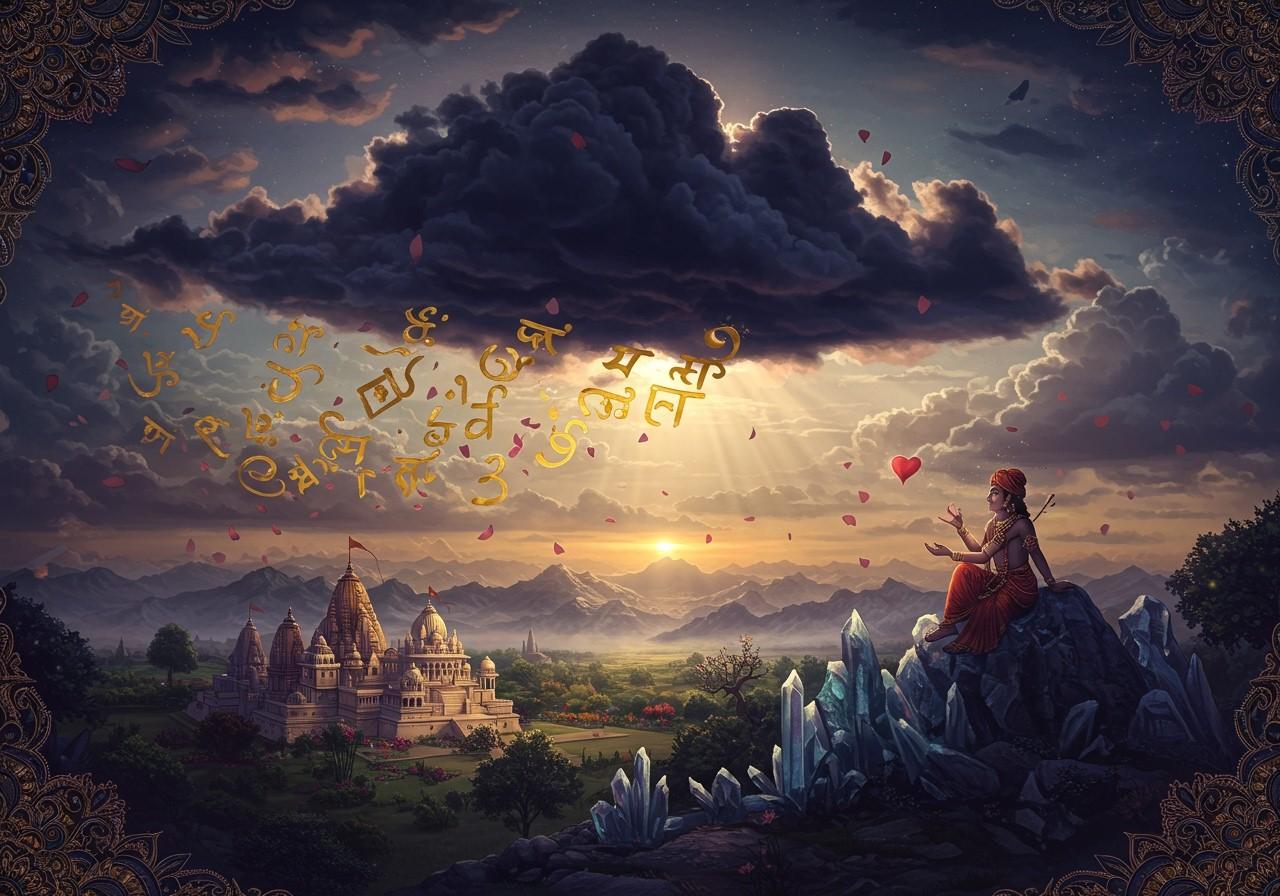
Kalidasa’s Meghaduta, a timeless Sanskrit lyric poem composed before AD 634, has resonated with readers for centuries. This masterpiece, consisting of 111 stanzas, narrates the poignant story of a yaksha separated from his beloved wife for a year due to negligence. He entrusts a cloud with a message of love and longing, embarking on a poetic journey that showcases the beauty of the Indian landscape and the depths of human emotion. This blog delves into the various translations of Meghaduta, exploring how cultural and linguistic nuances shape its interpretations across different languages.
Meghaduta: An Overview
A celebrated work of Sanskrit literature, Meghaduta is categorized within the saṁdeśa-kavya genre, or messenger poems. Penned by Kalidasa, a prominent figure in classical Indian literature, Meghaduta is believed to have been written around the 4th or 5th century. The poem is structured into two parts: Purvamegha (first part) and Uttaramegha (second part). Themes of longing, the power of nature, and unwavering devotion permeate the verses. Kalidasa masterfully employs poetic devices such as similes, metaphors, and personification, enriching the text with vivid imagery and emotional depth. Meghaduta’s enduring popularity is evident in its numerous translations across both Indian and international languages.
Meghaduta in English Translation
Translating Meghaduta into English presents unique challenges, particularly in preserving the original meter and cultural references inherent in the Sanskrit text. Scholars like Horace Hayman Wilson and Arthur W. Ryder have undertaken this task, making the poem accessible to a global audience. Each translation offers a distinct interpretation, reflecting the translator’s approach to conveying the yaksha’s emotional appeal and the vivid descriptions of nature. Linguistic differences inevitably influence how the poem’s themes are understood, and these English renditions have shaped the Western literary canon’s perception of Meghaduta. Modern English verse translations are also available, including free PDF ebook versions.
Meghaduta in Hindi Translation
Hindi translations of Meghaduta benefit from the linguistic similarities between Hindi and Sanskrit, allowing them to retain much of the original poem’s flavor. Renowned Hindi translators, such as Ramabhadra Sharma, have contributed to bringing Meghaduta to Hindi-speaking audiences. These translations demonstrate a strong ability to handle cultural and mythological references effectively. A comparison between Hindi translations and the original Sanskrit reveals a high degree of fidelity to the source material. The widespread reception of Meghaduta in Hindi-speaking regions underscores its significant role within Hindi literary traditions.
Meghaduta in Kannada Translation
Translating Meghaduta into Kannada presents its own set of challenges due to the linguistic and cultural variations between the two languages. Key Kannada translators, including D. V. Gundappa, have made notable contributions to Kannada literature through their work on Meghaduta. Kannada translations often showcase creative approaches to conveying the poem’s themes of love, separation, and the depiction of the Indian landscape. Comparing these translations with the Sanskrit original reveals a balance between accuracy and creative liberties taken by the translators. The reception of Meghaduta in Karnataka has had a lasting impact on Kannada poets and writers.
Comparative Analysis of Translations
A comparative analysis of Meghaduta’s translations across English, Hindi, and Kannada offers valuable insights. Each language brings its unique strengths to interpreting the poem’s themes, imagery, and emotional tones. The handling of cultural references and mythological elements varies across translations, reflecting the cultural context of each language. Furthermore, the linguistic structures of each language influence the poem’s rhythm and flow in distinct ways, contributing to a diverse range of interpretations and reader experiences.
Poojn.in: Supporting Your Exploration of Meghaduta and Indian Culture
Poojn.in, India’s leading online store for cultural goods and services, provides resources to enhance your understanding and appreciation of Meghaduta. We recognize the significance of the Arjun tree (Terminalia arjuna), prominently featured in Kalidasa’s poem, and offer pure Arjun bark for ritual purposes. You can find this sacred bark by various names on our platform:
- Arjun Bark (English): Sourced and prepared according to traditional methods, our Arjun bark is ideal for use in rituals and ceremonies. Explore our selection of Arjun bark products.
- Arjuna (Hindi): We offer high-quality Arjuna bark for those seeking authentic ingredients for their spiritual practices. Discover our range of Arjuna products in Hindi.
- Arjuna Ela (Tamil), Arjuna Kottai (Malayalam), Arjunaru (Kannada), Nirmarjuna (Telugu): Poojn.in caters to diverse linguistic communities, offering Arjun bark under its regional names. Find Arjun bark in your preferred language.
Poojn.in also offers a wide array of authentic ritual items that complement the study and recitation of sacred texts like Meghadūta:
- Copper Vessels: Used for water offerings and other ceremonial purposes. Browse our collection of copper vessels.
- Pure Cotton Asanas: Provide a comfortable and sacred space for meditation and study. Find the perfect asana for your practice.
- Traditional Oil Lamps, Natural Incense Sticks, Ritual Bells: Enhance the ambiance and sanctity of your spiritual practices. Explore our complete range of ritual items.
Each product is accompanied by detailed descriptions in multiple Indian languages, ensuring accessibility for all customers. Poojn.in provides secure packaging and doorstep delivery across India, preserving the sanctity of these ritual items.
The Everlasting Influence of Meghadūta
More than just a poem, Kalidasa’s Meghaduta serves as a bridge between diverse cultures and languages. Its journey through translations reveals the profound beauty and adaptability of Sanskrit literature across various linguistic landscapes. Whether in English, Hindi, or Kannada, each translation provides a unique lens through which to appreciate Kalidasa’s masterpiece. By exploring these diverse interpretations, we gain a deeper understanding of the poem’s enduring power and its ability to evoke profound emotions and vivid imagery across linguistic boundaries. Meghaduta stands as a testament to the rich literary heritage of India and the dedication of translators in sharing this timeless work with the world.
Further explore the themes and characters of the Ramayana with these related articles:
- Ramayana Characters and Life Lessons
- Dharma in the Ramayana: A Thematic Exploration
- Ramayana: Timeless Lessons for Modern Life


